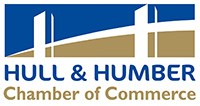Quarterly Economic Survey - Q4 2016: Positive, but cautious note for Humber economy
AFTER a something of a roller-coaster ride in 2016, the economy in the Humber region heads into 2017 on a more positive note, recovering some of the ground lost in Quarter 3, but retaining a cautious outlook.
Notably, Home sales and orders regained some ground, with home sales showing a rise of 17 points, coming back into positive territory with a balance figure of 4 points, while home orders rose 20 points, also returning to positive territory with a balance figure of 5.
The exports sector didn’t fare quite so well, with more firms reporting a decrease in export sales with the balance figure dropping a further two points on the third quarter’s figure to –5.
Export orders did noticeably better this time around, possibly reflecting the drop in Sterling making UK goods more attractive abroad, with six per cent more firms reporting an increase in orders with the balance figure rebounding 13 points on Quarter 3 from –7 to 5.
The jitters over the exchange rate seen in last quarter’s figures have also subsided. It jumped from 22% in Quarter 2 to 55% last quarter, but the latest set of figures saw it drop back 22 points to 32, showing there are still some concerns in the market heading into the New Year.
Four per cent more firms (13%) were concerned about rising interest rates, up from 9% in the last quarter, but the figure is still one point lower than in quarter two.
With inflation predicted to rise in 2017, businesses said they were concerned about increasing costs, with 25% of firms citing higher pay settlements, finance costs and other overheads.
Concerns over competition and tax showed little change this quarter.
The number of firms planning to invest in Plant and Machinery dropped a further three points to –15. Companies planning to increase investment dropped seven points, while those maintaining their current investment levels rose by 12 percentage points to 60%.
Investment in training also took a dive in the last quarter of 2016, dropping 13 points further into negative territory to –17, with seven per cent more firms cutting back on their training plans for the next three months.
The number of firms expecting their turnover to remain the same for the next 12 months rose to 30 points, up 12 on the last quarter, with seven per cent fewer companies predicting an increase. The balance figure fell one point to 18.
Employment figures look fairly stable, with seven per cent more firms (74%) having maintained their existing staffing levels.
Looking to the next three months, the balance figure for the number of firms planning to recruit staff rose by nine points, returning to positive territory.
Of the firms recruiting new staff, 78 per cent were looking to fill permanent positions, although there was a slight drop in the number of full time roles, and a rise in the number of part-time positions.
The number of firms reporting difficulties recruiting was up 11 points, with the biggest challenges to be found in sourcing clerical staff, up 8%. There was a drop of 14 points in difficulties finding unskilled or semi-skilled workers. The figures for skilled manual and management roles were the same as in Q3.
DOWNLOAD THE FULL SURVEY:
























